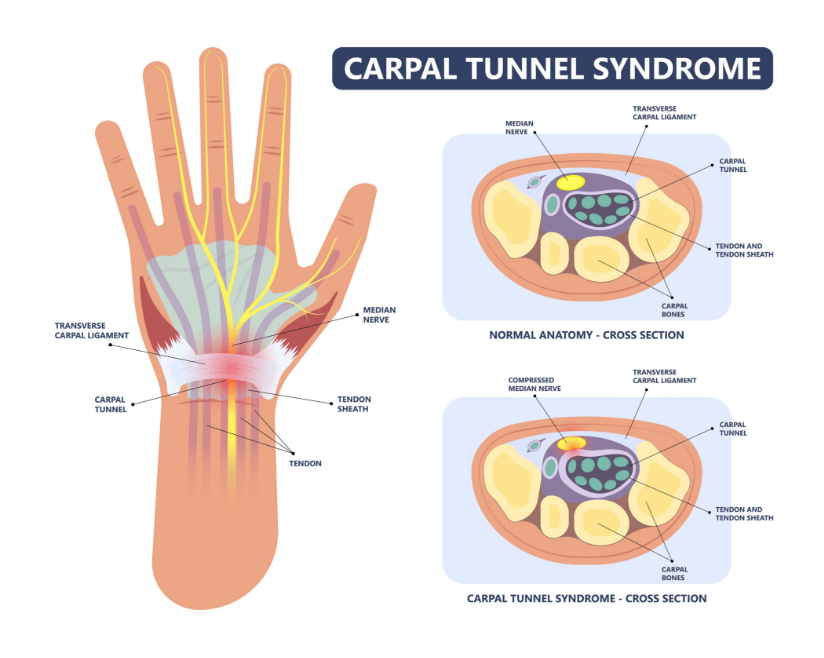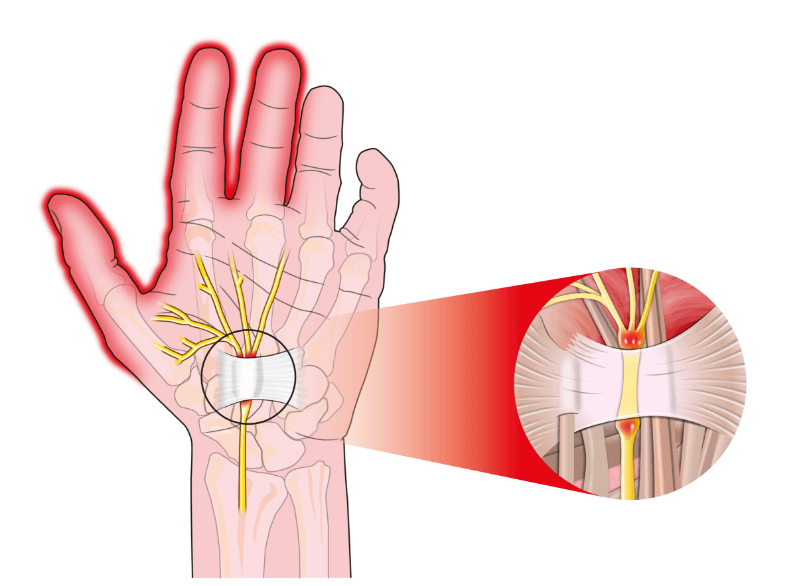Nerve Hydrodissection
Ultrasound-guided Hydrodissection
Ultrasound-guided hydrodissection represents a relatively recent and minimally invasive approach to address compressed nerves, offering an alternative to surgical interventions. This procedure involves the precise injection of fluid around the compressed nerve at the site of compression. The primary goal is to create a separation between the affected nerve and the surrounding tissues.
Minimally Invasive Alternative
Unlike traditional surgical methods, which often require incisions and significant tissue disruption, ultrasound-guided hydrodissection is minimally invasive. It is performed with the guidance of ultrasound imaging, which allows for precise needle placement and a more targeted approach. This reduces the risk of complications and typically leads to a quicker recovery.
Mechanism of Action
The injection of fluid serves a dual purpose in this procedure. First, it helps to physically separate the nerve from the compressing structures, similar to the effect achieved through surgical release. This separation relieves the pressure on the nerve, which can be the source of pain and discomfort. Second, the injected fluid may include a local anesthetic, providing immediate pain relief.

Resolving Pain and Nerve Symptoms
Ultrasound-guided hydrodissection aims to alleviate the symptoms associated with compressed nerves. These symptoms can range from pain and discomfort to numbness, tingling, and muscle weakness. By creating space around the nerve, the procedure allows the nerve to function more freely and can lead to a resolution of these symptoms over time.

Nerve Mobility Restoration
Another critical aspect of this procedure is its potential to restore the natural mobility and gliding ability of the compressed nerve. When a nerve is entrapped or compressed, its movement can be restricted, leading to further irritation and dysfunction. By freeing up the nerve from its entangled state, hydrodissection can enable the nerve to glide more freely, promoting improved function.
Individualized Treatment
Ultrasound-guided hydrodissection is often tailored to the specific needs of the patient. The procedure can be adapted to address different nerves and locations within the body, making it a versatile option for various nerve compression conditions.
Consideration Before Surgery
For individuals facing the prospect of surgery to release a compressed nerve, ultrasound-guided hydrodissection can be an alternative or a precursor. It provides an opportunity to explore less invasive options before committing to surgery, with the potential for similar outcomes in terms of pain relief and symptom resolution.
In summary, ultrasound-guided hydrodissection offers a less invasive and targeted approach to treating compressed nerves. By injecting fluid around the compressed nerve, it creates space and separation, relieving pressure and allowing the nerve to function more effectively. This procedure has the potential to resolve pain, numbness, and other nerve-related symptoms while promoting the restoration of normal nerve function.
